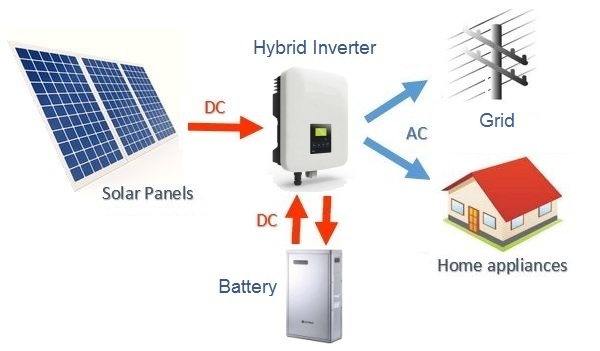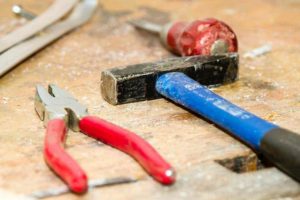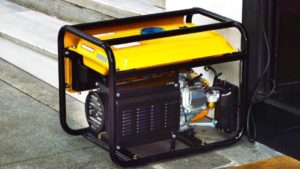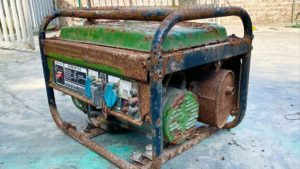Designing off-grid hybrid energy systems require careful planning and consideration of various factors to ensure reliability, efficiency, and longevity.
With multiple options available for each component in the system, it is important to understand not only their functions but also how they work together effectively while minimizing unnecessary expenses.
These components include solar panels, wind turbines or alternatively sourced energy sources that contribute to your electricity supply needs within predefined parameters established according to usage patterns specific for your home’s requirement set which would enable seamless operation across both on-grid and off-grid modes.
By examining these considerations closely one can create a successful design tailored specifically their house so they may experience sustainable power production without worry about energy shortage or expensive bills at any given time!
Determine your energy needs
Start by assessing your energy needs and identifying the loads you want to power. This will help you determine the size and type of equipment you need.
This involves tracking your energy usage over a period of time to determine your average daily energy consumption and the specific loads that require power, such as lights, appliances, and heating and cooling systems.
Knowing the size and type of equipment you need will help you select the appropriate renewable energy system and ensure that it can meet your energy demands.
For example, if you have a small household with modest energy needs, a small solar panel system may be sufficient to power your lights, appliances, and heating and cooling systems.
However, if you have a larger household with more extensive energy needs, a larger solar panel system or a wind turbine system may be necessary to meet your energy demands.
By taking the time to assess your energy needs and identify the loads you want to power, you can ensure that your renewable energy system is tailored to meet your specific needs and provide you with reliable, renewable energy for years to come.
Choose the right combination of renewable energy sources
Consider the availability of sunlight, wind, and water in your area, as well as the costs and benefits of each technology. A combination of solar, wind, and hydro power can provide a reliable and sustainable energy supply.
When considering renewable energy options for your home or business, it’s essential to assess the availability of sunlight, wind, and water in your area.
Solar power is a viable option for many regions, as long as there is adequate sunlight.
However, if your location experiences frequent cloud cover or shade, solar may not be the best choice.
Wind power can be a reliable option if your area experiences consistent breezes or winds, but turbulent weather conditions may impact its efficiency.
Hydro power is best suited for areas with accessible water sources, such as a river or stream.
Before selecting a renewable energy technology, it’s important to evaluate the costs and benefits of each option.
While initial installation costs may be higher for some technologies, such as solar panels, long-term savings on energy bills can make up for these upfront investments.
Many governments offer incentives and rebates for renewable energy installations, which can help offset costs.
By considering the availability of sunlight, wind, and water in your area, as well as the costs and benefits of each technology, you can make an informed decision about the best renewable energy solution for your needs.
Select an energy storage solution
Energy storage is critical to an off-grid hybrid energy system, as it allows you to store excess energy generated by the renewable sources for use during periods of low energy availability. Common energy storage solutions include batteries, flywheels, and hydrogen fuel cells.
Energy storage is a important component of an off-grid hybrid energy system, enabling the efficient management of excess energy generated by renewable sources.
By storing energy during periods of high availability, the system can draw upon this reserve during periods of low energy availability, ensuring a consistent and reliable power supply.
Common energy storage solutions include advanced battery technologies such as lithium-ion and lead-acid batteries, flywheels, and hydrogen fuel cells.
These technologies offer varying advantages and disadvantages, and the choice of storage solution will depend on factors such as energy demand, storage duration, and system cost.
Advanced batteries, for example, offer high energy density and long lifetimes, while flywheels provide rapid response times and low maintenance.
Hydrogen fuel cells, while offering high energy density and zero emissions, require additional infrastructure and are less established in the market.
Careful consideration of these factors and the specific needs of the energy system will determine the most appropriate energy storage solution.
Plan for grid tie-in
If you plan to sell excess energy back to the grid, you’ll need to design your system with grid tie-in capabilities. This involves using inverters that can convert DC power to AC power, and isolation switches to disconnect from the grid when necessary.
If you plan to sell excess energy back to the grid, you’ll need to design your system with grid tie-in capabilities.
This involves using inverters that can convert DC power to AC power, and isolation switches to disconnect from the grid when necessary.
The inverter is a important component of your system, as it converts the DC power generated by your solar panels or wind turbines into AC power that can be fed into the grid.
To ensure safe and efficient operation, it’s essential to select an inverter that meets your system’s specific needs and complies with relevant grid standards.
Moreover, isolation switches are necessary to disconnect your system from the grid during periods of excessive energy production, such as during periods of high solar irradiance or strong winds.
These switches can be automatically controlled using smart technologies to ensure seamless integration with the grid.
With grid tie-in capabilities, you can sell excess energy back to the grid and contribute to a more sustainable energy future.
Proper design and installation of your system’s grid tie-in capabilities are critical to ensure safe, efficient, and reliable operation.
Consider energy efficiency
Energy efficiency measures can help reduce the size and cost of your energy system, and can also lower your overall energy consumption. Consider implementing energy-efficient lighting, appliances, and HVAC systems.
Energy efficiency measures can significantly reduce the size and cost of your energy system, while also lowering your overall energy consumption.
One of the most effective ways to achieve this is by implementing energy-efficient lighting, appliances, and heating, ventilation, and air conditioning (HVAC) systems.
Energy-efficient lighting options like LED bulbs use significantly less energy than traditional incandescent bulbs, and can last up to 25 times longer.
Similarly, energy-efficient appliances such as refrigerators, washing machines, and dishwashers use less energy and water than their traditional counterparts.
By installing energy-efficient HVAC systems, you can save money on your energy bills while also reducing your carbon footprint.
Many energy-efficient products have rebates and incentives attached to them, which can further offset the cost of upgrading your systems.
By taking a proactive approach to energy efficiency, you can not only save money but also contribute to a more sustainable future.
Use a load management system
A load management system can help you optimize your energy use by prioritizing loads based on importance and availability of energy sources. This can help you reduce waste and improve system efficiency.
A load management system can help you prioritize your energy use by identifying which loads are most critical and should be run first, based on factors such as their importance and the availability of energy sources.
By doing so, you can reduce waste and improve system efficiency.
For instance, if you have a critical load that requires a constant supply of energy, the load management system can ensure that it receives priority access to energy sources, such as the grid or renewable energy sources, while less critical loads are temporarily delayed or reduced in power.
This can help you optimize your energy use and reduce waste by ensuring that your most important loads are always running at peak efficiency.
The system can also help you identify opportunities to shift non-critical loads to times when energy is more abundant, such as during off-peak hours or when renewable energy sources are more available.
By taking a proactive approach to managing your energy use, a load management system can help you save money, reduce your carbon footprint, and improve the overall efficiency of your energy systems.
Monitor and control your system
A remote monitoring and control system can help you monitor your energy system’s performance, identify issues, and make adjustments as needed. This can help ensure your system runs at its best and provides reliable energy.
A remote monitoring and control system is an invaluable tool for ensuring your energy system operates at its full potential.
With real-time monitoring, you can track your system’s performance and quickly identify any issues before they become major problems.
This allows you to make adjustments on the fly, ensuring your system runs reliably and efficiently.
Remote monitoring allows you to adjust settings, control peripherals, and troubleshoot issues from anywhere, at any time.
By leveraging remote monitoring and control, you can confidently rely on your energy system to provide consistent, high-quality energy, without the need for manual on-site checks and adjustments.
With the right software and hardware components, you can enjoy the benefits of a self-optimizing system that maximizes energy production and minimizes downtime.
Plan for maintenance and repairs
An off-grid hybrid energy system requires regular maintenance and repairs to ensure it runs reliably and efficiently. Plan for regular inspections, cleaning, and replacement of parts as needed.
An off-grid hybrid energy system, like any other complex system, requires regular maintenance and repairs to ensure it runs reliably and efficiently.
Proper planning and execution of regular inspections, cleaning, and replacement of parts as needed can help prevent unexpected downtime, reduce energy waste, and extend the lifespan of the system.
Inspections: Schedule regular inspections of the system, including the solar panels, wind turbine, and energy storage batteries.
Check for any signs of wear and tear, damage, or degradation, and address any issues promptly.
Cleaning: Clean the solar panels and wind turbine blades regularly to ensure optimal performance.
Dust and dirt can significantly reduce the efficiency of these components, so it’s essential to keep them clean.
Replacement of parts: Plan for the replacement of parts as needed.
For example, the solar panels and wind turbine blades may need to be replaced every 10-15 years, while the energy storage batteries may need to be replaced every 5-7 years.
By incorporating regular maintenance and repairs into your off-grid hybrid energy system plan, you can ensure reliable and efficient energy production, reduce the risk of unexpected downtime, and extend the lifespan of the system.
Remember to budget for these expenses and plan for regular inspections and maintenance to ensure your system operates at its best.
Want More? Dive Deeper Here!
Hey there! If you’re the type who loves going down the rabbit hole of information (like we do), you’re in the right spot. We’ve pulled together some cool reads and resources that dive a bit deeper into the stuff we chat about on our site. Whether you’re just killing time or super into the topic, these picks might just be what you’re looking for. Happy reading!






